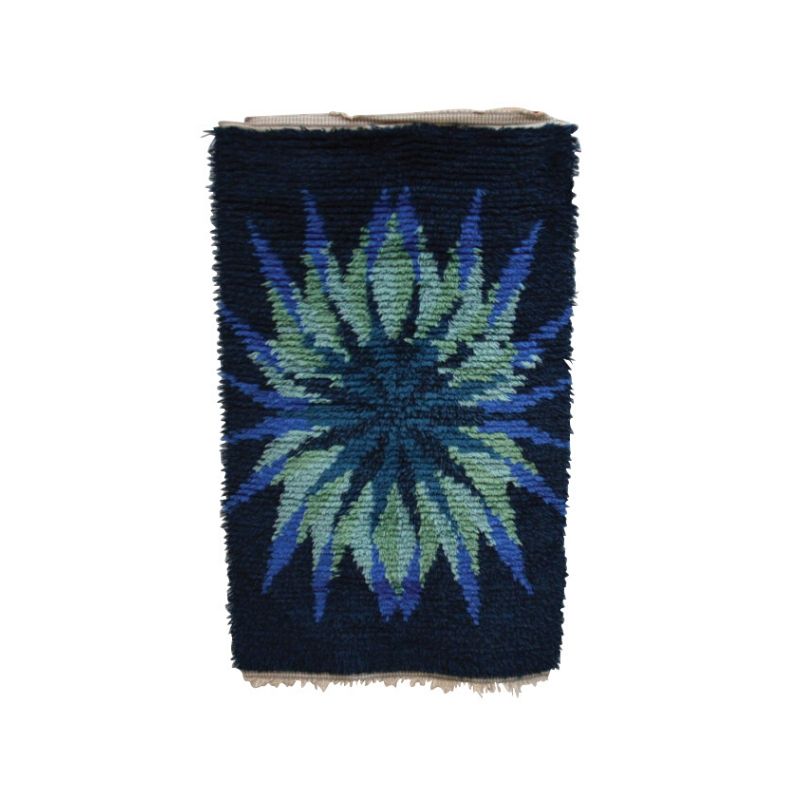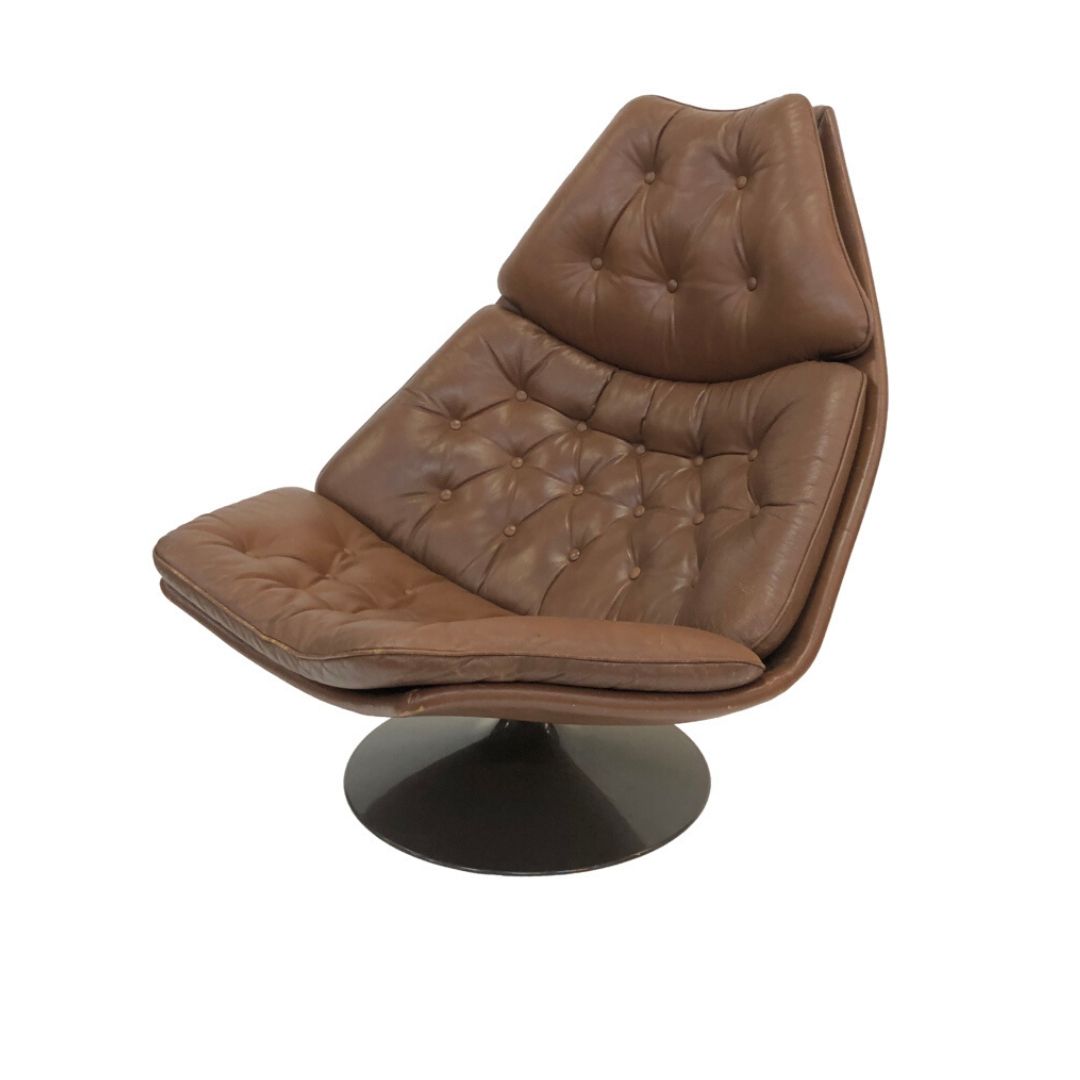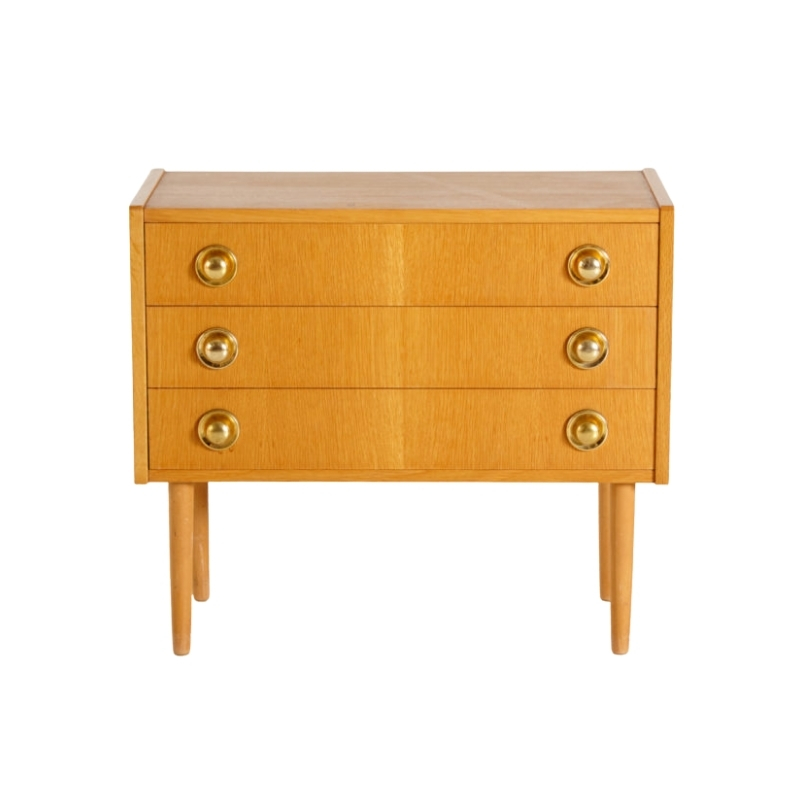This is my favorite Kayser made by Vatne. I am a bit unsure of the model number. I have only seen it in a Lauritz description and from my experience, Lauritz can be sloppy with attributions.
As far as I know, the model is less common than the 711. I prefer the tapered, more slender arms of the 563 over the more rounded arms of the 711. My chair is reupholstered in leather. The original covering was wool.
This particular model has a one piece seat which is supported by two cross pieces - modelled on Finn Juhl. The front cross piece is clearly labeled with "Vatne Lenestolfabrikk".
The entire frame is in massive teak. I am impressed by the care and finish in the carpentry. Even the underside of the seat is rounded and smoothed. Most people will never bother to look there much less tidy it up.  <img class="wpforo-default
<img class="wpforo-default
Anatomy of a Kayser 563
I am planning to reupholster a Fredrik Kayser 563. I am no expert but I thought I would document the process as I go along.
The fabrik is coarse wool. The feel is like Harris tweed; rough, indestructible, cottage woven. Nothing like the slick, big city stuff the Copenhagen designers had access to. Vatne is way out in the Norwegian fjord country. In a way, this is part of the charm of this chair. I am saving the covers. Maybe they can be drycleaned and reused.
The upholsterer completely overdid it. The corners are first handsewn to pull everything tight, then tacked and then stapled. I have seen some of stuff by big name guys like Jacob Kjaer and Rud. Ramusen and they did not put this much work into the bottom of their chairs. That is for sure.
The Ugly truth
So we all love mid-century Scandinavian, right? The problem is that some time in the 50s, the designers and manufacturers in Scandinavia discovered plastic foam. Up until then, people used horse hair. Ask anybody. Horse hair is the best stuff there ever was for stuffing chairs. You can even wash the old stuff from the 1800s and reuse it today.
Foam on the other hand gets hard and brittle. It is sensitive to UV and ozone and probably farts for all I know. Most of the furniture from the 50s and 60s now has padding that is basically the consistency of styrofoam. You can crush it and pulverize it.
I have considered using horse hair to reupholster the seats. I still might change my mind. But I think I am going with foam rubber which is denser and heavier than the plastic foams and seems to hold up better than plastic as well. Besides Vatne used foam so it would be keeping with the original material in a way.
So here come the pictures of the interior. For you who are sensitive, it's not pretty.
Construction details
The wooden frames of the seat and back are joined to make them one piece. Burlap is stretched over the frame on both the front and back of the backrest. A thin 5 mm foam sheet is also stretched across the outside of the backrest to give it a softer feel (see pic). The cushioning of the backrest is 20 mm latex foam.
The seat is constructed by stretching burlap over the frame. But only on top. The springs underneath are visible. The cushioning in the seat uses 25 mm latex foam.
A surprise is that there is an additional layer of material between the burlap and the latex, I found some cotton batting (I think it is called). The batting is not very thick, perhaps 10 mm when it was new. Unfortunately, the batting shifted a little as I was tearing off the latex. I would guess that the batting was used to give the latex a slight contour in places like the small of the back.
Some afterthoughts:
Underneath the dried latex, the build quality is pretty impressive. The original foam is definitely latex and not poly-whatever. It just is(was) better material. The carpentry of the seat/back frame is excellent.
The only tools I used were a small, thin screwdriver, some needlenosed pliers to remove the staples, tacks. The fabric can be pulled off. Have a vacuum cleaner close at hand because the job is MESSY and dust gets everywhere.
I have splashed out on Ebay and bought a secondhand Berry #2 staple puller, a used magnetic hammer and tack puller.
Modular design
Vatne used a modular design concept for Kaysers chairs and probably many of it's other chairs. The principle modules were the arms/legs modules and the seat modules. The cross pieces also varied.
This was pretty rational. It made for chairs that could be knocked down and shipped in compact packs. It also meant that you could achieve several different "looks" by combining a limited number of components.
If you look at the seat in the first picture of a 711, you can see that has exactly the same seat structure as in the black leather 563. It is a unitized seat/back construction. The difference between this variant of the 711 and 563 is that the arms and legs are different and that there is a third crosspiece at the back of the 711.
Another seat/back variant is two flat frames which supported loose cushions. The second picture shows 563 arm/legs with the flat frame backs.
The third photo has a arm/leg module that is attrib. to Kayser but I have never seen a model number. It has a different flat frame than the second pic.
If you need any help, please contact us at – info@designaddict.com









